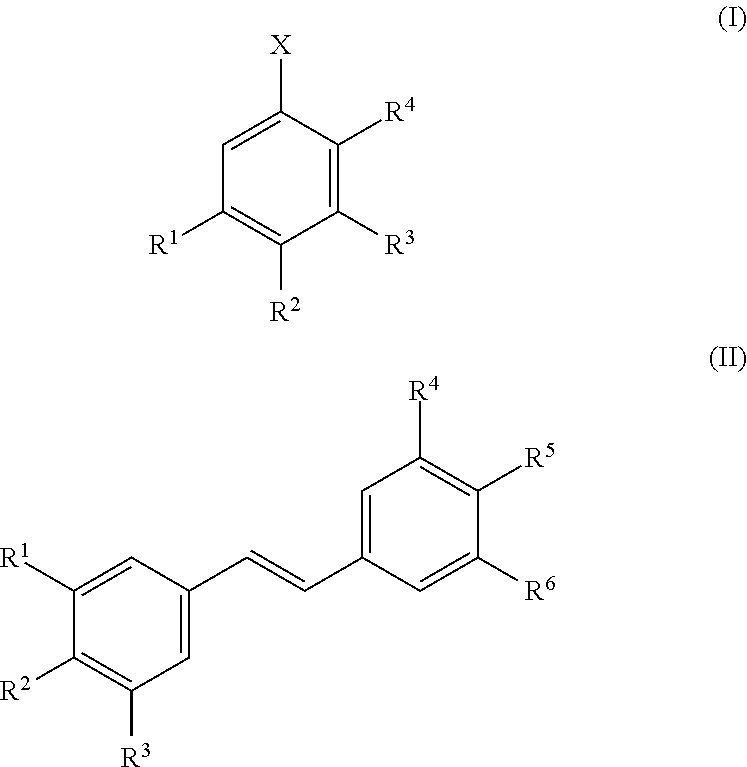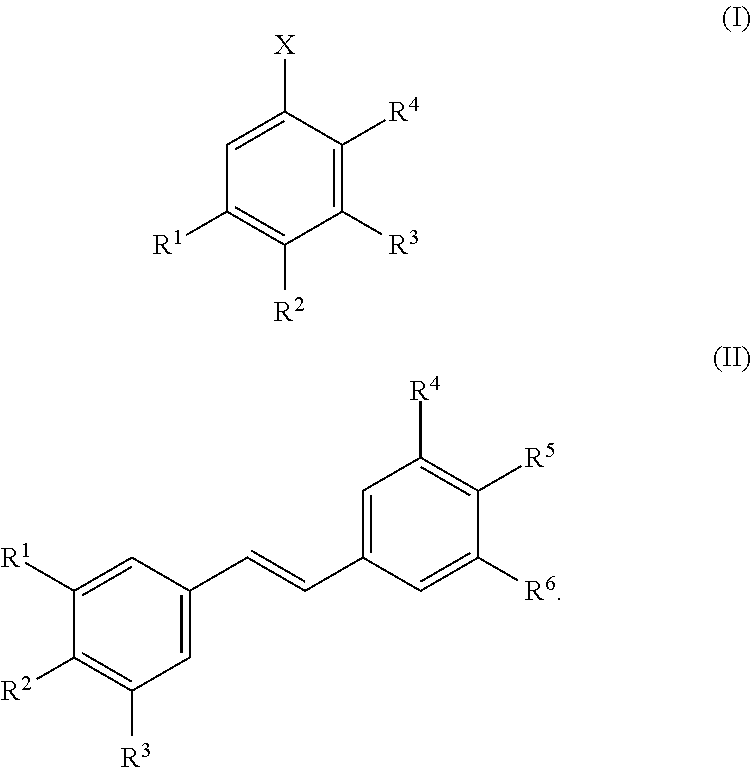Method for extracting aromatic products of value from compositions containing lignin
- Summary
- Abstract
- Description
- Claims
- Application Information
AI Technical Summary
Benefits of technology
Problems solved by technology
Method used
Image
Examples
examples
[0082]I) Analysis
[0083]The content of vanillin, acetovanillon, guaiacol, 3,3′-dimethoxy-4,4′-dihydroxystilbene and other organic components of the aqueous lignin-comprising compositions used was determined by means of high-performance liquid chromatography (HPLC). As stationary phase, the column Chromolith® High Resolution RP18e from Merck (length: 100 mm, diameter 4.6 mm) was used. The analysis temperature was 25° C. In this case two mobile phases were used: HPLC water with 0.1% by weight of 70 percent perchloric acid as mobile phase A; acetonitrile as mobile phase B.
[0084]II) Adsorption and Desorption of Aromatic Valuable Materials on Activated Carbon
example ii.1
nd Desorption of Aromatic Valuable Materials Such as Vanillin, Acetovanillone, Guaiacol and 3,3′-dimethoxy-4,4′-dihydroxystilbene on Activated Carbon
[0085]Activated Carbon Used
[0086]In the experiment, the activated carbon Norit® ROY 0.8 from Norit Carbon was used. This activated carbon is a hard-coal-based extrudate and is washed repeatedly with lye (aqueous NaOH) after a steam activation. The bulk density of the activated carbon is 400 g / L. The activated carbon has a moisture content of a max. of 5%.
[0087]Lignin-Comprising Composition Used:
[0088]The lignin-comprising composition used was black liquor (thin liquor) from wood pulp production. For the experiment, the black liquor was filtered using a metal filter (filter pore size=90 micrometers). The HPLC analysis of the filtered black liquor gave the following concentrations of the organic components: 447 mg / kg of vanillin, 268 mg / kg of acetovanillone, 460 mg / kg of guaiacol and 490 mg / kg of 3,3′-dimethoxy-4,4′-dihydroxystilbene.
[008...
example ii.2
nd Desorption of Aromatic Valuable Materials Such as Vanillin, Acetovanillon, Guaiacol and 3,3′-dimethoxy-4,4′-dihydroxystilbene on Activated Carbon
[0098]Activated Carbon Used:
[0099]In the experiment, the activated carbon Aquacarb™ 207C from Chemviron Carbon was used. This activated carbon is a coconut-based granulated activated carbon activated with steam. The bulk density of the activated carbon is 450 g / L. The activated carbon has a moisture content of a max. of 5%.
[0100]Lignin-Comprising Composition Used:
[0101]The lignin-comprising composition used was black liquor (thin liquor) from wood pulp production. For the experiment, the black liquor was filtered using a metal filter (filter pore size=90 micrometers). The HPLC analysis of the filtered black liquor gave the following concentrations of the organic components: 457 mg / kg of vanillin, 349 mg / kg of acetovanillone, 506 mg / kg of guaiacol and 308 mg / kg of 3,3′-dimethoxy-4,4′-dihydroxystilbene.
[0102]Experimental Procedure:
[0103]A ...
PUM
| Property | Measurement | Unit |
|---|---|---|
| Mass | aaaaa | aaaaa |
| Mass | aaaaa | aaaaa |
| Acidity | aaaaa | aaaaa |
Abstract
Description
Claims
Application Information
 Login to View More
Login to View More - R&D
- Intellectual Property
- Life Sciences
- Materials
- Tech Scout
- Unparalleled Data Quality
- Higher Quality Content
- 60% Fewer Hallucinations
Browse by: Latest US Patents, China's latest patents, Technical Efficacy Thesaurus, Application Domain, Technology Topic, Popular Technical Reports.
© 2025 PatSnap. All rights reserved.Legal|Privacy policy|Modern Slavery Act Transparency Statement|Sitemap|About US| Contact US: help@patsnap.com


